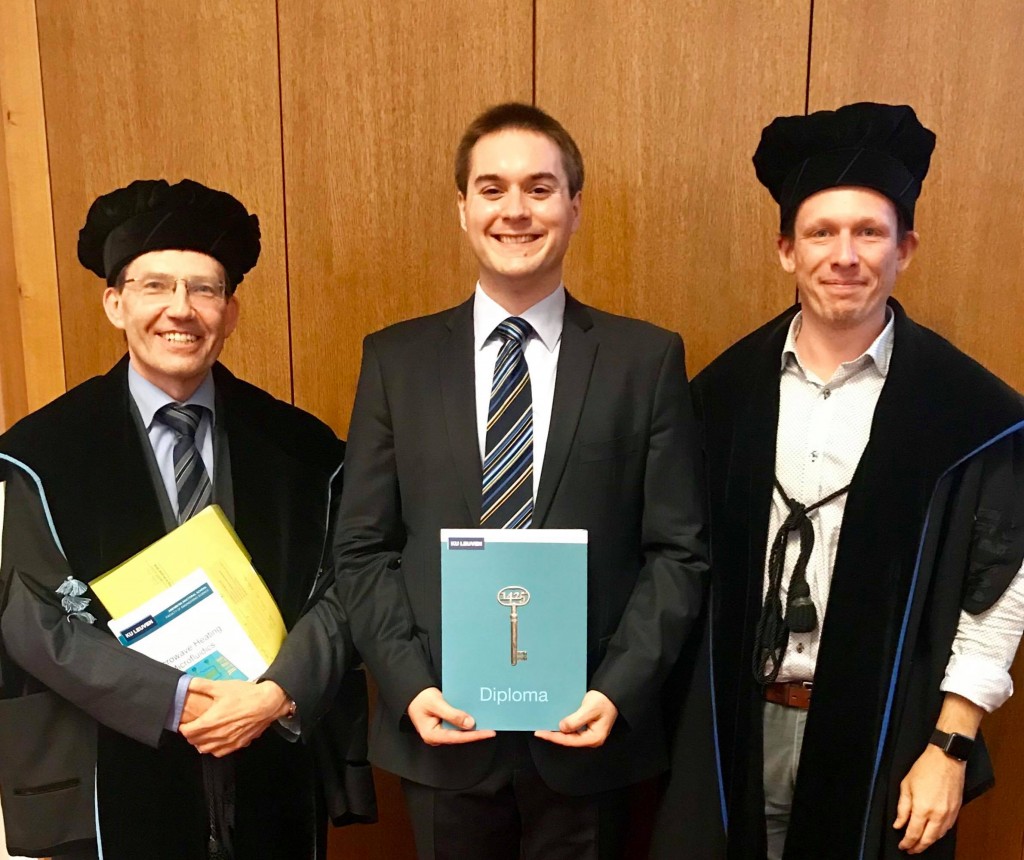 Prošli je tjedan na belgijskom Sveučilištu u Leuvenu održana obrana doktorske disertacije Tomislava Markovića s naslovom “Microwave Heating for Microfluidics” (Mikrovalna kontrola temperature mikrofluida). Pod mentorstvom profesora Barta Nauwelaersa i Ilje Ocketa, ovaj mladi Križevčanin s belgijskom adresom je time obranio vlastiti izvorni znanstveni doprinos području mikrovalnih istraživanja u molekularnoj biologiji.
Prošli je tjedan na belgijskom Sveučilištu u Leuvenu održana obrana doktorske disertacije Tomislava Markovića s naslovom “Microwave Heating for Microfluidics” (Mikrovalna kontrola temperature mikrofluida). Pod mentorstvom profesora Barta Nauwelaersa i Ilje Ocketa, ovaj mladi Križevčanin s belgijskom adresom je time obranio vlastiti izvorni znanstveni doprinos području mikrovalnih istraživanja u molekularnoj biologiji.
Marković je 2013. godine završio diplomski studij na Fakultetu elektrotehnike i računarstva Sveučilišta u Zagrebu, u području elektrotehnike i informacijske tehnologije pod mentorstvom profesora Adrijana Barića. Koautor je 14 znanstvenih radova predstavljenih na međunarodnim konferencijama s međunarodnom recenzijom te jednog rada u znanstvenom časopisu s međunarodnom recenzijom.
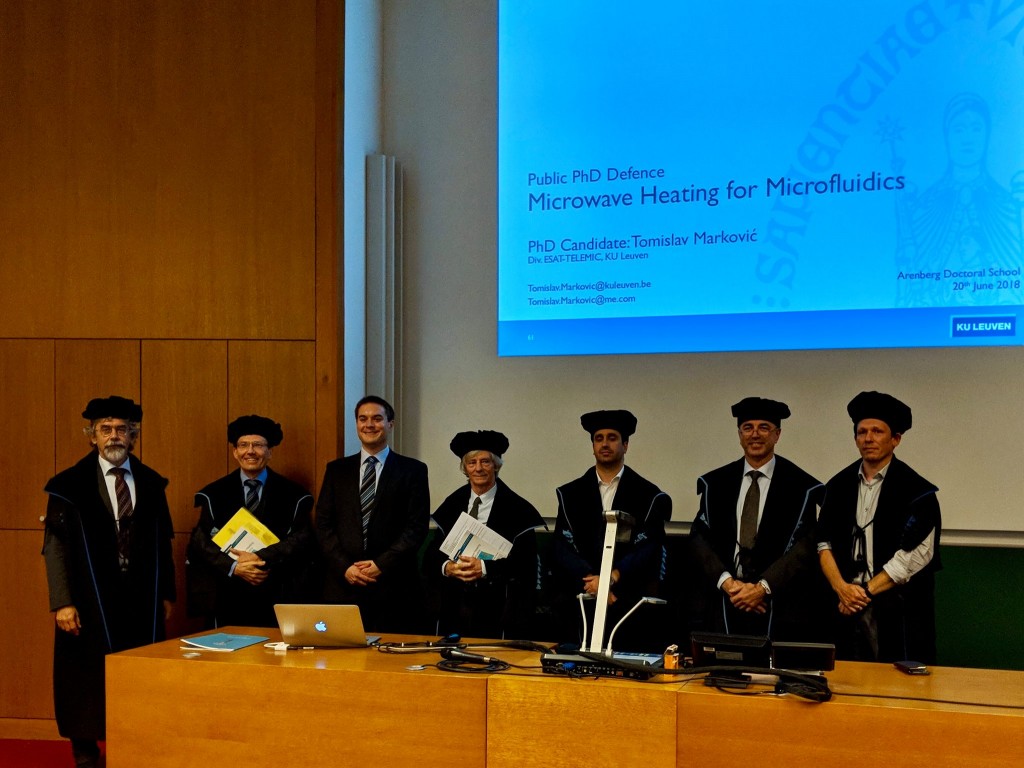 Spomenimo još da će dr.sc. Marković na temu svog znanstvenog istraživanja održati i gostujuće predavanje na Fakultetu elektrotehnike i računarstva Sveučilišta u Zagrebu, i to u ponedjeljak, 16. srpnja 2018. godine s početkom u 12 sati. Predavanje organizira Hrvatska sekcija IEEE, Odjel za elektroničke elemente / poluvodičke integrirane sklopove te Odjel za teoriju i primjenu mikrovalova (MTT).
Spomenimo još da će dr.sc. Marković na temu svog znanstvenog istraživanja održati i gostujuće predavanje na Fakultetu elektrotehnike i računarstva Sveučilišta u Zagrebu, i to u ponedjeljak, 16. srpnja 2018. godine s početkom u 12 sati. Predavanje organizira Hrvatska sekcija IEEE, Odjel za elektroničke elemente / poluvodičke integrirane sklopove te Odjel za teoriju i primjenu mikrovalova (MTT).
Sažetak disertacije (na engleskom jeziku): This PhD project aims at developing integrated microwave or millimeter wave based heating systems for total analysis systems (μTAS), which are miniaturised microfluidic lab-on-a-chip devices that perform several laboratory functions on a single device. In total analysis systems (μTAS) accurate and fast temperature cycling is an important issue. Temperature control in μTAS typically employs Peltier elements or resistive heaters, which are limited by the thermal conductivity between the sample and the heating element. Other disadvantages of these heating methods include their limited heating gradient and the required close proximity between heater and fluid.
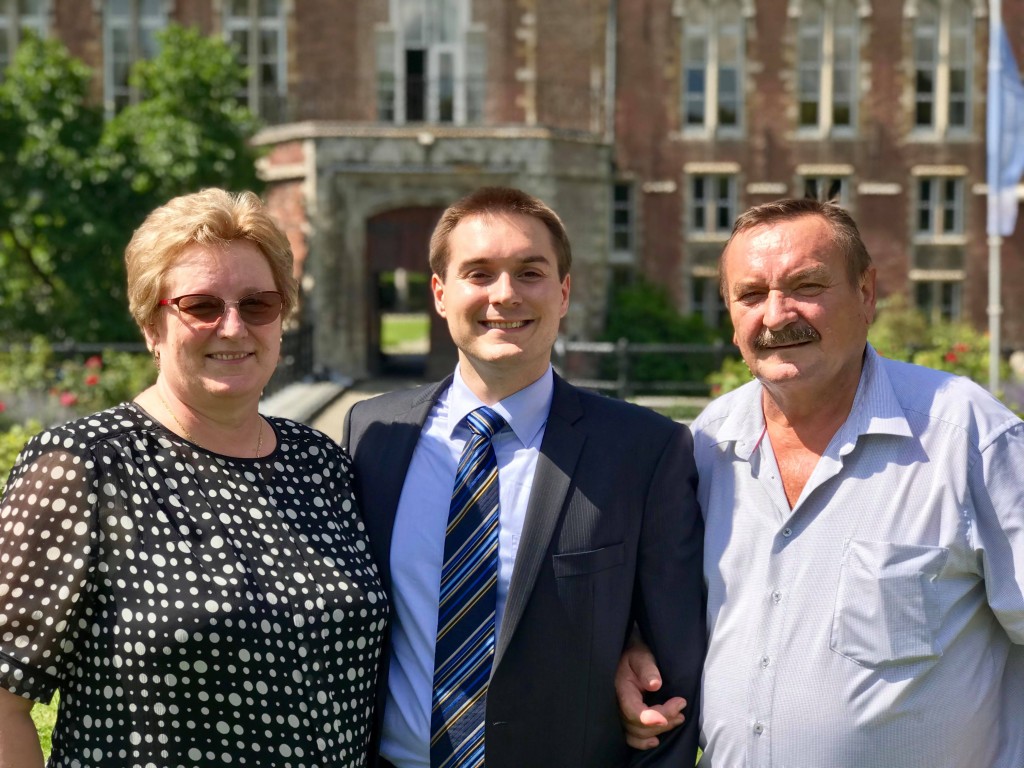 The use of microwaves or millimeter waves circumvents these issues. It has the potential to operate in a non-contacting and spatially selective manner, (dissipation only occurs in the fluid sample). If the material between the fluid and the microwave heating structure has low losses (e.g. glass), very little power will be dissipated there. Using microwaves also has the benefit of being suitable for integration into existing technology platforms, without adding much processing complexity.
The use of microwaves or millimeter waves circumvents these issues. It has the potential to operate in a non-contacting and spatially selective manner, (dissipation only occurs in the fluid sample). If the material between the fluid and the microwave heating structure has low losses (e.g. glass), very little power will be dissipated there. Using microwaves also has the benefit of being suitable for integration into existing technology platforms, without adding much processing complexity.
The development of integrated microwave or millimeter wave based heating systems for μTAS constitutes the primary objectives. Although this can be seen as a “closed” research question, the issue of controlling for temperature effects is also important in microwave and millimeter wave sensing devices. In addition, work on the EM-thermal interaction could also lead to novel ideas for microfluidic actuation. To keep these topics in the “peripheral view” of the project, they are included as secondary objectives. The primary project objectives are: 1) The development of microwave and millimeter wave heater structures for certain applications and that can be realized in different technology platforms. 2) The development of microwave and millimeter wave temperature sensing structures for the same applications and technologies.
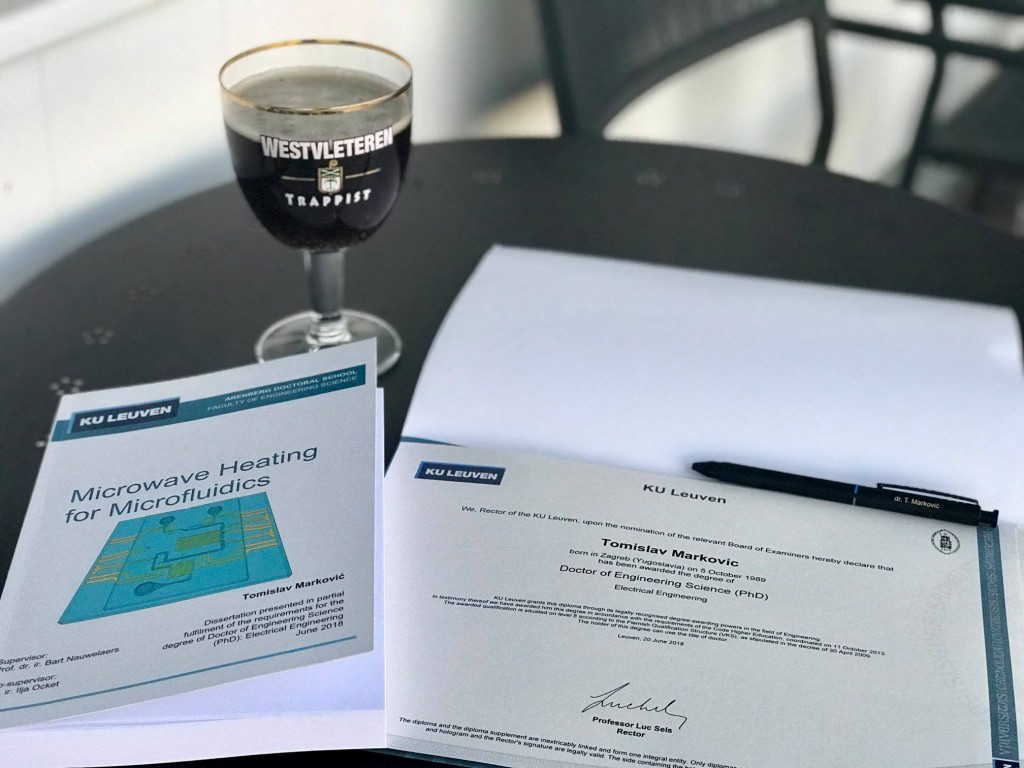 In order to develop these structures, the interactions between microwaves and liquid samples will be modelled in detail, some secondary project objectives can be defined as well, which might come out naturally as we work towards the primary objectives. These include: 1) To achieve the primary objectives, detailed modelling of the thermal flow inside microfluidic channels or reservoirs is needed. Out of this, novel techniques for thermal actuation result as a natural consequence. 2) Because heat delivery in combination with temperature monitoring is studied, novel ways to measure fluid flow could result. 3) Sensing (spectroscopy) techniques employing microwaves, millimeter waves or THz waves have been under investigation as a potentially highly sensitive technique.
In order to develop these structures, the interactions between microwaves and liquid samples will be modelled in detail, some secondary project objectives can be defined as well, which might come out naturally as we work towards the primary objectives. These include: 1) To achieve the primary objectives, detailed modelling of the thermal flow inside microfluidic channels or reservoirs is needed. Out of this, novel techniques for thermal actuation result as a natural consequence. 2) Because heat delivery in combination with temperature monitoring is studied, novel ways to measure fluid flow could result. 3) Sensing (spectroscopy) techniques employing microwaves, millimeter waves or THz waves have been under investigation as a potentially highly sensitive technique.
However, to achieve this potential accuracy, the temperature of the sample fluid needs to be either very carefully controlled or at least accurately known at the moment a measurement is done. The work done on developing a microwave based temperature sensor could provide an important contribution to this research field as well.


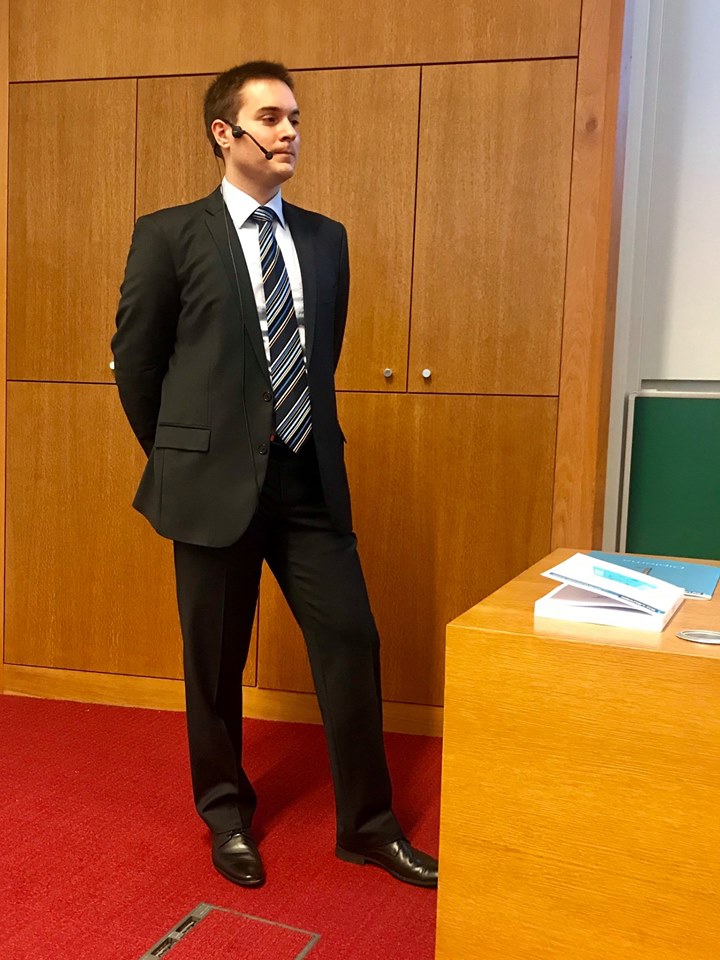
Komentari su zatvoreni.